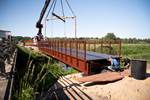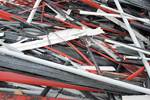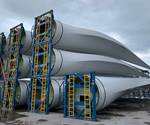European associations seek to up-scale cement coprocessing for composites
Industry partners call on policymakers to support the recycling process in the EU for end-of-life composite materials, facilitate further decarbonization and circularity.
A cement coprocessing plant. Photo Credit: Gregory Dubus
Working together to increase the circularity of composite materials, European-based WindEurope, the European Composites Industry Association (EuCIA), Cembureau (European Cement Association), the European Boat Industry (EBI), Cefic UP/VE Resin Association, Cefic Epoxy Europe and Glass Fibre Europe, have published a statement highlighting the important role cement coprocessing can play in treating end-of-life (EOL) composite materials.
The seven industry associations call on policymakers to recognize these benefits and facilitate the upscaling of coprocessing as a recycling process with a more supportive EU regulatory framework, to enable the EU to foster industry growth and ensure a circular future for the cement and composite material sectors, both of which are extensive.
Recycling EOL composite materials — separating the constituent fibers and polymers — still remains a technical challenge (read “Moving toward next-generation wind blade recycling” for examples in the wind industry). Cement coprocessing is said to offer a sustainable and circular solution. The process enables comprehensive recycling glass fiber composites, while mitigating climate change through the reduction of natural raw materials in cement manufacturing and the replacement of fossil energy sources.
The seven associations are further collaborating to promote sustainable recycling approaches for EOL composite materials with more actions planned in the coming months.
The joint Position Paper is available to download from the Publications section of the .
Related Content
-
Revisiting the OceanGate Titan disaster
A year has passed since the tragic loss of the Titan submersible that claimed the lives of five people. What lessons have been learned from the disaster?
-
Infinite Composites: Type V tanks for space, hydrogen, automotive and more
After a decade of proving its linerless, weight-saving composite tanks with NASA and more than 30 aerospace companies, this CryoSphere pioneer is scaling for growth in commercial space and sustainable transportation on Earth.
-
Sulapac introduces Sulapac Flow 1.7 to replace PLA, ABS and PP in FDM, FGF
Available as filament and granules for extrusion, new wood composite matches properties yet is compostable, eliminates microplastics and reduces carbon footprint.






